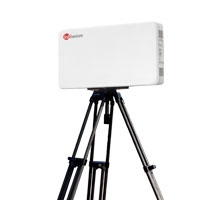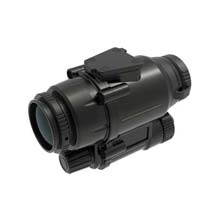Greatly Elevating Petrochemical Equipment Surveillance with Thermal Cameras

Effective surveillance is the backbone of a secure and efficient petrochemical facility. Thermal cameras, with their cutting-edge capabilities, have redefined the way we monitor and maintain critical equipment. These cameras not only enhance detection capabilities but also contribute significantly to safety and cost-effectiveness.
1. Benefits of Thermal Cameras in Petrochemical Equipment Surveillance
1.1 Improved Detection Capabilities
One of the key advantages of thermal cameras lies in their ability to detect anomalies and potential issues that may go unnoticed with traditional surveillance methods. These cameras operate on the principle of capturing infrared radiation, allowing them to identify temperature variations. This proves invaluable in pinpointing overheating components or other irregularities that could lead to equipment failure.
Moreover, the high sensitivity of thermal imaging cameras enables early detection of potential problems, allowing for timely intervention and preventive maintenance. This proactive approach minimizes the risk of unexpected breakdowns, ultimately improving the reliability of petrochemical processes.

1.2 Increased Safety
Safety is paramount in petrochemical plants, where hazardous materials and complex processes are commonplace. Thermal cameras play a crucial role in identifying safety hazards by detecting abnormal temperature patterns. This early detection of overheating equipment or leaks provides plant operators with the information needed to address issues promptly, mitigating potential accidents and ensuring a safer working environment.
1.3 Cost-Effectiveness
Beyond safety enhancements, thermal imaging cameras contribute to cost-effectiveness in petrochemical operations. By identifying issues early on, these cameras help prevent costly equipment failures and downtime. The investment in thermal surveillance technology proves to be a wise one as it leads to substantial savings in maintenance costs and reduces the need for emergency repairs.

2. Technical Features of Thermal Cameras
2.1 High-Resolution Imaging
The effectiveness of thermal cameras is greatly influenced by their imaging capabilities. High-resolution imaging allows for clear and detailed monitoring of equipment. This is particularly beneficial in petrochemical settings, where precision is essential for identifying minute temperature variations and potential issues.
2.2 Temperature Sensitivity
Thermal cameras' ability to detect temperature variations is a critical feature in petrochemical surveillance. Whether monitoring heat exchangers, pipelines, or storage tanks, the temperature sensitivity of these cameras ensures that even the slightest deviations are captured. This capability is instrumental in maintaining optimal operating conditions and preventing equipment failures.

2.3 Integration with Monitoring Systems
Seamless integration with existing monitoring systems is another highlight of thermal cameras. These cameras can be easily incorporated into the overall surveillance infrastructure of a petrochemical facility. This integration enhances the overall effectiveness of surveillance, allowing operators to access thermal data alongside other critical monitoring parameters.
3. Real-world Applications
In a refinery setting, thermal cameras were employed to monitor the heat exchangers. The cameras detected a slight temperature increase in one of the units, leading to the identification of a clogged tube. The issue was addressed promptly, preventing a potential breakdown and saving significant maintenance costs.
In a storage facility, thermal imaging cameras identified a hotspot in a storage tank, indicating a potential insulation issue. The timely intervention prevented a larger problem, demonstrating the preventive power of thermal surveillance.

4. Considerations for Implementation
Implementing thermal cameras for petrochemical equipment surveillance requires careful consideration.
4.1 Installation Guidelines
Proper installation is crucial for maximizing the effectiveness of thermal cameras. Strategic placement to cover critical areas and routine checks to ensure alignment are essential steps in the installation process.
4.2 Maintenance and Calibration
Regular maintenance and calibration are imperative to keep thermal cameras in top condition. This includes cleaning lenses, checking for any physical damage, and calibrating the cameras to maintain accuracy.

The integration of thermal imaging cameras into petrochemical equipment surveillance is a transformative step toward enhanced safety, efficiency, and cost-effectiveness. The ability to detect anomalies early on, coupled with seamless integration and high-resolution imaging, makes thermal imaging cameras indispensable in modern petrochemical operations.
As industries continue to embrace advanced technologies for surveillance, thermal cameras stand out as a reliable and efficient solution. Their impact on improving petrochemical equipment surveillance is undeniable, ushering in a new era of preventive maintenance and safety protocols.

















